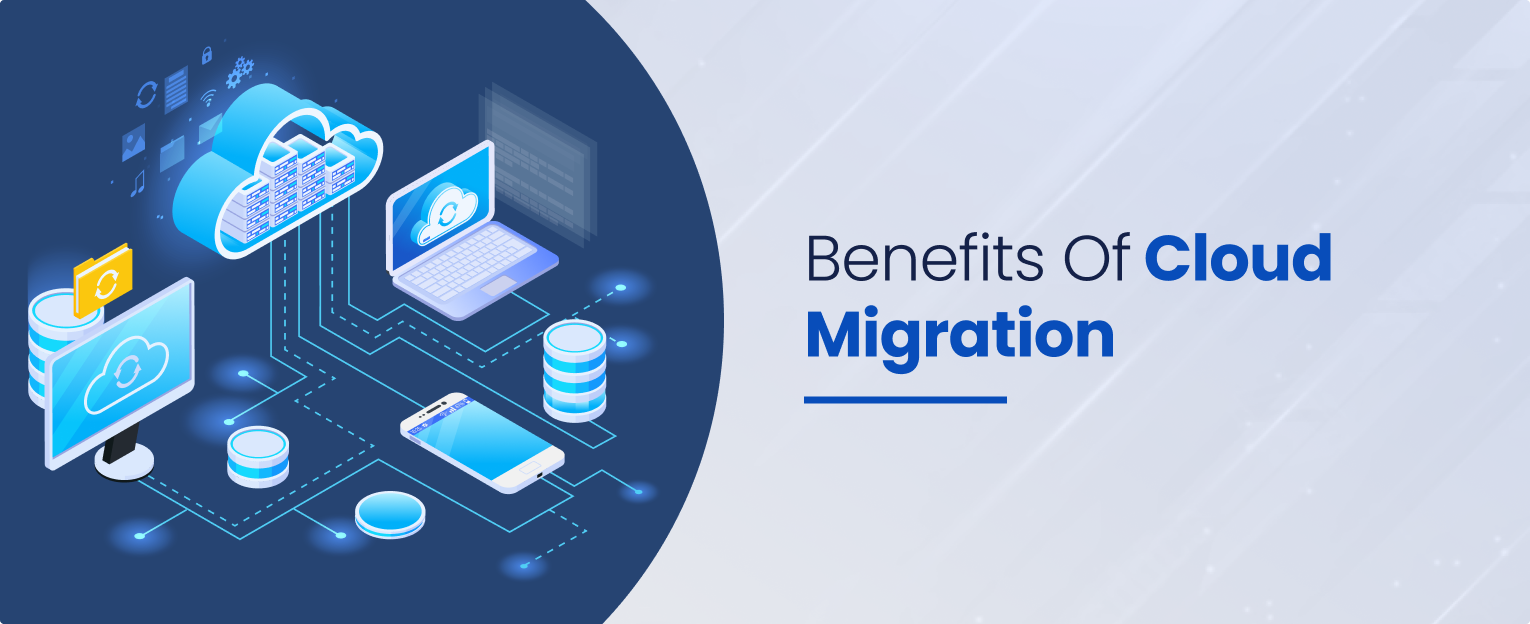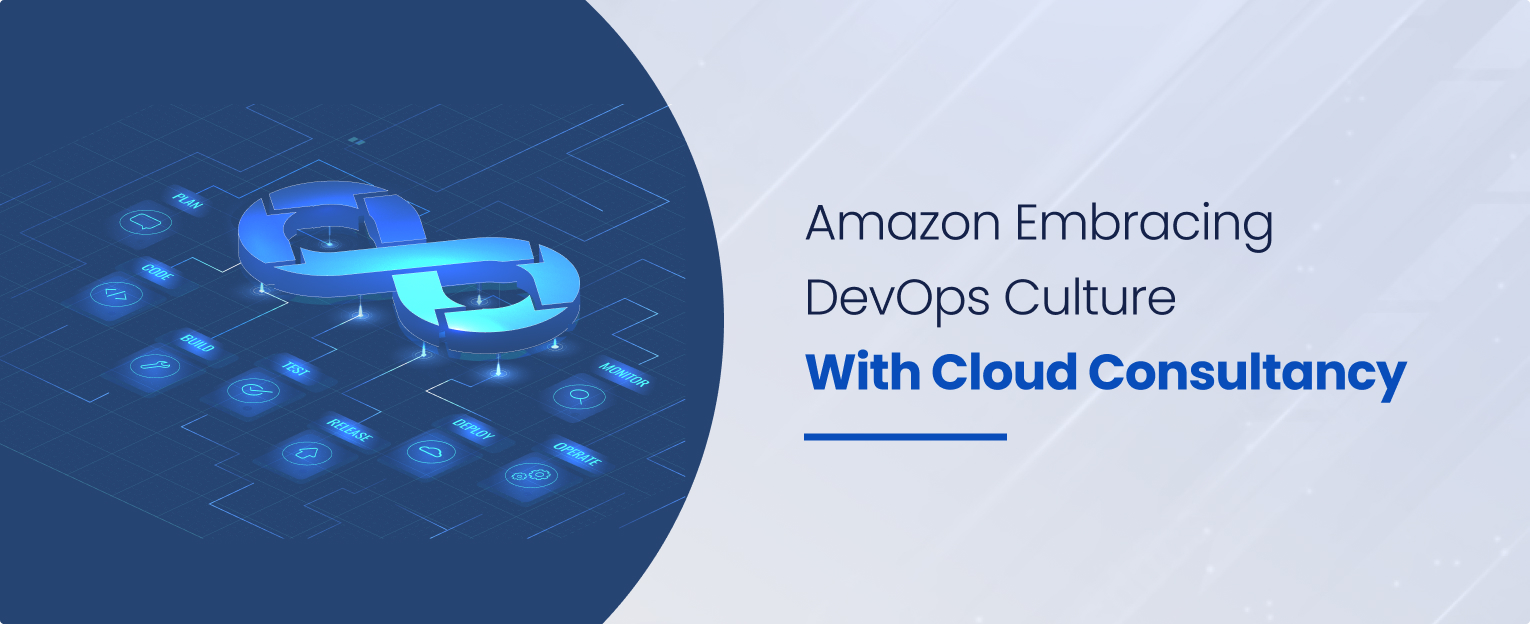Cloud migration involves moving digital assets, applications, and data from on-premises infrastructure to cloud environments. This transition can significantly reshape business operations, enhancing efficiency, flexibility, and scalability. Many businesses are considering cloud migration to remain competitive, take advantage of cutting-edge technology, and streamline operations.
But what makes cloud migration so compelling?
In this blog, we’ll explore the top 8 benefits that make cloud migration valuable for organizations and to ensure a smooth, secure transition.
For companies ready to embrace the future, understanding these benefits and strategic insights can pave the way for more adaptive, efficient, and future-ready business operations and beyond.
What is Cloud Computing, and Why Do Businesses Need to Move to the Cloud?
Transitioning to cloud services may seem daunting for businesses relying on traditional, on-premises platforms. However, with the guidance of a reliable, experienced provider, this shift can be both smooth and highly beneficial. But why should businesses consider cloud migration in the first place?
Cloud computing enables companies to manage their resources online, eliminating the need to own and maintain costly physical servers and data centers. Instead of investing in infrastructure, companies rent access to applications, data storage, and computing power from cloud providers. This shift streamlines operations and offers a flexible, scalable solution tailored to evolving business needs.
Why is Cloud Migration Important?
Businesses of all sizes recognize cloud migration as critical for sustainable growth and innovation. Shifting to the cloud provides access to powerful tools, from advanced analytics and AI-driven insights to scalable computing power, which are crucial for making data-driven decisions and staying ahead in fast-paced industries.
For many organizations, cloud migration isn’t just a modernization effort—it’s a pathway to becoming more agile, responsive, and customer-centric.
One of the most compelling reasons cloud migration has become vital is its support for greater agility and flexibility. Leveraging AWS migration tools offers businesses a more streamlined transition, enabling them to move their assets securely and efficiently while optimizing for scalability. These tools simplify migration processes and provide a structured approach to onboarding.
In addition to agility, cloud migration has become essential for supporting today’s increasingly remote and hybrid work environments.
Moreover, cloud migration is key to optimizing cost efficiency. Cloud providers offer flexible pricing models, such as pay-as-you-go, which means businesses only pay for the resources they use.
This flexibility reduces overhead associated with on-premises hardware and maintenance, freeing up resources that can be redirected toward core business activities and innovation.
Cloud migration is transformative in helping businesses enhance operational efficiency, adapt to changing work dynamics, and build a resilient, future-ready infrastructure. By embracing cloud solutions, organizations gain the tools and flexibility to innovate, stay competitive, and drive long-term growth.
8 Advantages of Moving to the Cloud
Migrating to the cloud has become essential for businesses aiming to modernize and streamline operations in today’s digital-first world. Cloud migration involves moving a company’s digital assets, applications, and data from on-premises servers to a cloud environment, unlocking new efficiency, agility, and scalability levels.
As organizations face rising demands for flexibility, secure remote access and cost-effective solutions, the cloud provides powerful tools and infrastructure to meet these needs. This transition helps companies stay competitive and use cutting-edge technologies that drive growth and innovation.
Let’s explore the top eight benefits of cloud transformation that make it a compelling choice for forward-thinking businesses.
1. Cost Savings
Migrating to the cloud significantly reduces the need for physical infrastructure, leading to cost savings on hardware, energy, and maintenance. Additionally, cloud providers offer flexible pay-as-you-go models, allowing businesses to only pay for the resources they consume.
A Deloitte study found that organizations experience an average cost savings of up to 40% after moving to the cloud, primarily by eliminating the high costs associated with on-premises servers and infrastructure maintenance. These savings create more opportunities for businesses to reinvest in innovation and growth.
2. Scalability and Flexibility
Cloud environments offer unprecedented scalability, enabling businesses to adjust resources based on demand quickly. Whether handling seasonal spikes or unexpected surges, the cloud eliminates physical infrastructure limitations, allowing companies to scale up or down without long-term commitments or added expenses.
This scalability is particularly valuable for businesses with fluctuating workloads, allowing them to remain agile and responsive without over provisioning resources.
3. Improved Performance and Speed
Cloud platforms provide high-performance computing capabilities that boost application performance, ensuring faster processing speeds and improved user experiences. With data centers strategically located worldwide, cloud services optimize bandwidth and reduce latency.
This global reach means end-users can enjoy faster load times and seamless interactions regardless of location. This improved performance supports customer satisfaction, reduces bounce rates, and enhances businesses’ competitive positioning.
4. Disaster Recovery and Data Backup
Cloud migration brings built-in disaster recovery and data backup solutions, a critical component for businesses focused on continuity and resilience. Leading cloud migration services often include data redundancy across multiple data centers, reducing the risk of data loss during system failures or cyber incidents.
According to the IDC, businesses using cloud-based disaster recovery can reduce downtime by nearly 80% compared to on-premises setups, making business continuity practical and accessible for companies of all sizes.
5. Increased Collaboration and Accessibility
Cloud-based tools enable teams to access, edit, and share information in real time from anywhere, facilitating seamless collaboration. This accessibility is essential in remote and hybrid work models, where employees may work across different locations and time zones.
Cloud tools also allow real-time project updates, enhancing transparency and fostering more productive teamwork. As a result, businesses can operate efficiently, ensuring team members stay connected and aligned on goals, regardless of physical location.
6. Security and Compliance
Top cloud providers prioritize security, offering advanced safeguards like encryption, identity management, and intrusion detection. These measures provide data protection that can be challenging for individual businesses to replicate. Additionally, many cloud services comply with industry standards and certifications, easing the burden of regulatory compliance.
By using cloud providers’ security capabilities, businesses can enhance their data protection while meeting compliance requirements, ensuring they stay within regulatory boundaries with minimal effort.
7. Future-Proofing Business
Migrating to the cloud helps businesses remain at the forefront of technology by enabling access to innovations such as artificial intelligence, machine learning, and the Internet of Things (IoT). Cloud providers continuously update their services, ensuring businesses can use the latest tools and capabilities without needing major internal upgrades. The benefits of AWS in particular help future-proof operations, allowing companies to adapt to evolving industry demands.
By positioning themselves on the cloud, companies future-proof their operations, adapting quickly to technological advances and evolving industry demands, keeping them competitive and ready for growth.
8. Environmental Benefits
Cloud migration aligns with sustainability goals by reducing energy consumption linked to on-premises data centers. Many cloud providers, such as Amazon Web Services and Google Cloud, have committed to using renewable energy to power their facilities.
For example, Google Cloud operates on nearly 100% renewable energy, a step that significantly reduces carbon emissions. By migrating to the cloud, businesses contribute to a lower carbon footprint and help promote a greener, more sustainable future.
Challenges of Cloud Migration
While cloud migration offers numerous advantages, it also presents challenges that businesses must navigate carefully. Proactively addressing these challenges can lead to a smoother transition and tremendous success in cloud adoption.
Data Security Concerns
Despite the extensive security protocols that cloud providers implement, data security remains a primary concern for many organizations. Businesses may worry about the risk of data breaches or unauthorized access to sensitive information, especially when dealing with highly confidential or regulatory data.
To address these concerns, it’s essential to choose providers with vital solidity certifications (like ISO/IEC 27001) and employ additional security layers—such as encryption, multi-factor authentication, and data masking—to protect sensitive data further.
Downtime During Migration
Migration processes can result in temporary downtime, impacting productivity and revenue if not managed effectively. Organizations should develop a comprehensive cloud migration strategy to reduce this risk, including staged migration phases and extensive testing. Scheduling migrations during off-peak hours and creating a fallback plan can also help minimize operational disruptions.
Compatibility Issues
Moving applications and workloads to the cloud can present compatibility issues, especially with older, legacy systems that may not be designed for cloud environments.
Businesses should conduct thorough assessments to identify compatibility challenges, address any potential modifications or updates needed, and evaluate cloud-native alternatives where possible. This preparation can prevent performance issues and ensure seamless integration post-migration.
Cost Management
While cloud migration can reduce infrastructure costs, unexpected expenses can arise without carefully monitoring cloud resource usage.
Due to unplanned storage, computing, or data transfer costs, businesses may need to spend more money. Cloud cost management tools allow companies to monitor usage, set spending limits, and optimize resources. Implementing automated alerts and regularly reviewing cloud expenses can help maintain cost efficiency.
Vendor Lock-In
Choosing a cloud provider often means adapting to their unique infrastructure, which can lead to vendor lock-in. Switching providers becomes complex due to data portability and compatibility limitations.
Organizations can mitigate this risk by considering multi-cloud or hybrid strategies, enabling more flexibility in their choice of cloud providers. Adopting open standards and containerization solutions can also support easier migration across platforms if switching is necessary.
Training and Skill Gaps
Successful cloud migration and management require specific expertise, often necessitating upskilling or hiring new talent with cloud computing skills.
With sufficient training, teams can operate cloud environments efficiently, increasing the risk of misconfigurations and underutilization. Investing in a well-defined cloud strategy, training programs, and employee certifications can help bridge these skill gaps, ensuring the organization can fully use its cloud investment.
FAQs
What are the primary benefits of migrating to the cloud for businesses?
Migrating to the cloud offers significant benefits, including cost savings, scalability, and enhanced security. By transitioning from on-premises systems to cloud infrastructure, businesses can reduce their physical infrastructure expenses, access flexible computing resources, and benefit from advanced security protocols offered by cloud providers.
How can cloud migration improve my business’s disaster recovery strategy?
Cloud platforms offer built-in backup and disaster recovery options, which ensure that data is securely stored and can be quickly recovered in the event of a system failure or disaster. This significantly reduces downtime risks and helps businesses maintain continuity.
What are some challenges businesses face when migrating to the cloud?
While cloud migration offers many benefits, some challenges include data security concerns, potential downtime during migration, compatibility issues with legacy systems, and the risk of vendor lock-in. Carefully planning the migration process and selecting the right service providers can help mitigate these challenges.
How does cloud migration contribute to sustainability efforts?
Cloud providers often operate large, efficient data centers that consume less power per workload than traditional on-premises infrastructure. Many providers also use renewable energy sources, making cloud migration a more environmentally friendly choice for companies aiming to reduce their carbon footprint.
What are the best practices for a smooth and cost-effective cloud migration?
To ensure a successful cloud migration, businesses should conduct thorough assessments of their current infrastructure, develop a detailed migration plan, and use a phased migration approach to minimize downtime. Additionally, implementing cost management tools can help monitor expenses and optimize cloud resources.
Conclusion
Migrating to the cloud offers numerous advantages, from cost savings and flexibility to enhanced security and future-proofing. Despite some challenges, effective planning, training, and choosing the right cloud partner can mitigate these challenges.
Partner with Folio3 Cloud and Dara Services, which can help you integrate a cloud migration tool that is a robust, sustainable growth and innovation tool as businesses look to streamline operations and use digital transformation.














